The Chinese Sparrowhawk (Accipiter soloensis), a captivating raptor native to Asia, commands attention with its unique features and fascinating behaviors.
Belonging to the Accipitridae family, this medium-sized bird of prey exhibits striking sexual dimorphism, with males adorned in bluish-gray plumage and orange breasts, while females showcase a brownish-gray hue with a finely streaked underbelly.
Known for their agile flight and stealthy hunting techniques, Chinese Sparrowhawks primarily feed on small birds, displaying adaptability in their diet during migration.
Nesting high within the canopy, these raptors engage in cooperative parenting, emphasizing their familial bonds.
Despite their adaptability, the Chinese Sparrowhawk faces conservation challenges, underscoring the importance of understanding and safeguarding their habitats.
As we delve into the world of the Chinese Sparrowhawk, its aesthetic allure and ecological significance come to the forefront, making it a compelling subject of study and conservation efforts. Stay focused.
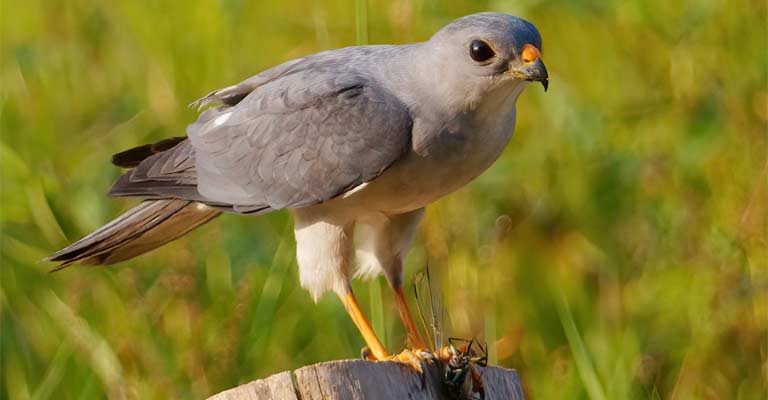
Taxonomical Details of Chinese Sparrowhawk
Here is a table outlining the taxonomy details of the Chinese Sparrowhawk:
| Taxonomic Rank | Classification |
| Domain | Eukaryota |
| Kingdom | Animalia |
| Phylum | Chordata |
| Class | Aves |
| Order | Accipitriformes |
| Family | Accipitridae |
| Genus | Accipiter |
| Species | A. soloensis |
The Chinese Sparrowhawk (Accipiter soloensis) belongs to the Accipitridae family and the Accipiter genus.
Within this species, sexual dimorphism is evident, with males featuring a bluish-gray upper body and an orange breast, while females display a brownish-gray hue with a streaked underbelly.
These raptors are part of the Accipitriformes order, encompassing various diurnal birds of prey.
The Chinese Sparrowhawk shares its taxonomic classification with related species like the Besra (Accipiter virgatus) and the Japanese Sparrowhawk (Accipiter gularis).
This group of accipiters is known for its agility, adaptability, and distinctive features, contributing to the rich biodiversity within the Accipitridae family.
Identifying Characteristics of Chinese Sparrowhawk
The Chinese Sparrowhawk (Accipiter soloensis), a captivating bird of prey, possesses distinctive characteristics that make it distinguishable from other raptors.
Identifying this species requires a keen eye and an understanding of its unique features. Here are some key points to aid in the identification of the Chinese Sparrowhawk:
Size and Shape
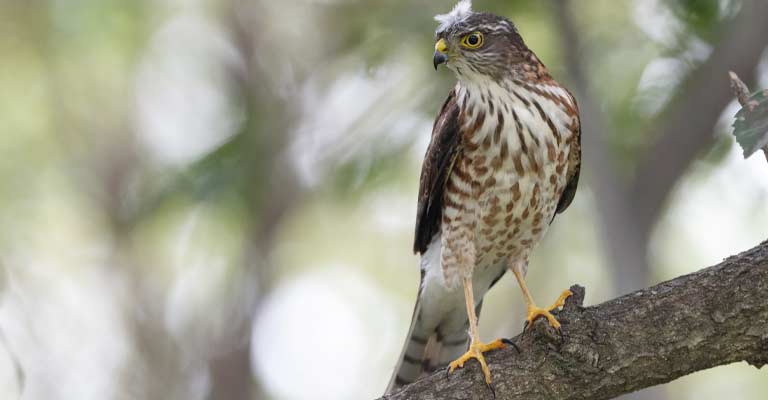
The Chinese Sparrowhawk is a medium-sized raptor, with a wingspan ranging from 58 to 78 centimeters. It has a compact and robust build, characterized by short wings and a long tail.
Its proportions contribute to its agile and maneuverable flight, allowing it to navigate through dense vegetation in pursuit of prey.
Plumage Variation
Adult Chinese Sparrowhawks exhibit sexual dimorphism in their plumage. Males typically have a bluish-gray upper body with a rufous or orange hue on the breast and belly.
Females, on the other hand, display a brownish-gray upper body and a finely streaked underbelly. Juveniles share similarities with females but often have more distinct streaking on their underparts.
Distinctive Facial Features
The Chinese Sparrowhawk’s facial features are crucial for identification. Both genders possess a yellow eye ring that contrasts with their dark eyes, creating a distinctive facial mask.
This feature aids in distinguishing them from other birds of prey.
Tail Bands
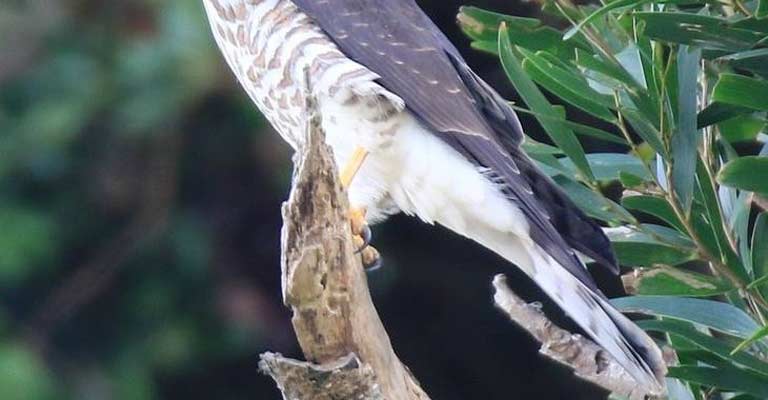
Another key characteristic is the presence of narrow dark bands on the tail feathers, particularly noticeable in flight.
These bands, often spaced evenly, contribute to the bird’s identification, as they are not as prominent in other raptor species.
Flight Pattern
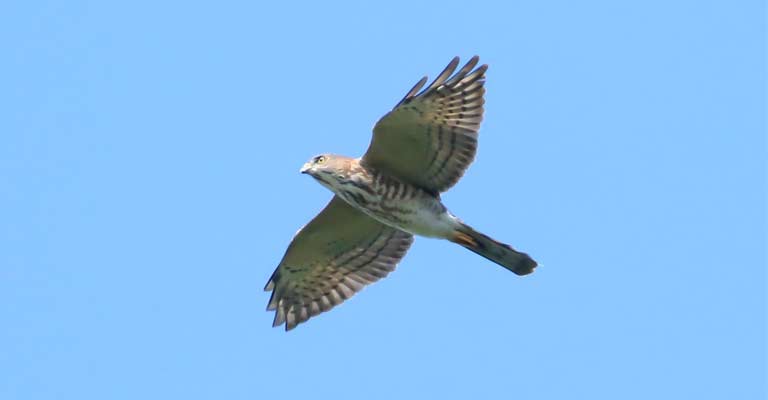
Observe the flight pattern of the Chinese Sparrowhawk. It is known for its rapid, direct flight with quick wing beats.
During migration, these birds can be seen soaring at higher altitudes, making use of thermal updrafts.
Habitat and Range
Understanding the habitat and range of the Chinese Sparrowhawk is crucial. They are commonly found in wooded areas, forests, and open country.
They are distributed across a wide range, including parts of Asia, from India to China, and even extending to Southeast Asia.
Vocalizations
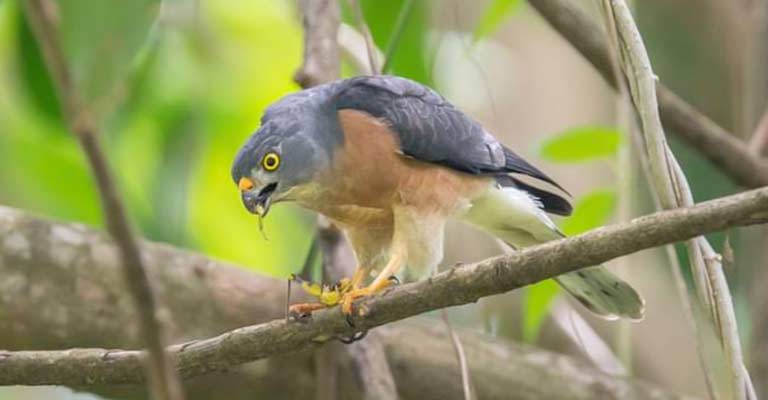
The Chinese Sparrowhawk is relatively vocal, especially during the breeding season. Familiarize yourself with their distinctive calls, which include high-pitched whistles and sharp chattering sounds.
These vocalizations can aid in locating and identifying them within their habitat.
Behavioral Traits
Pay attention to their hunting behavior. Chinese Sparrowhawks primarily prey on small birds, displaying a stealthy approach before launching a swift attack.
Observing their hunting tactics, such as sudden dives or bursts of speed, can be indicative of their presence.
Identifying the Chinese Sparrowhawk involves a combination of visual, auditory, and behavioral cues.
By honing in on these eight key points, bird enthusiasts and ornithologists can enhance their ability to recognize and appreciate the unique characteristics of this captivating raptor in its natural habitat.
Chinese Sparrowhawk Life History
The Chinese Sparrowhawk (Accipiter soloensis) is a fascinating bird of prey that inhabits diverse ecosystems across Asia.
Understanding its life history provides valuable insights into its ecology, behavior, and conservation needs.
Delving into various aspects, from its dietary preferences to nesting habits, breeding behavior, and conservation concerns, sheds light on the intricacies of the Chinese Sparrowhawk’s existence.
Food
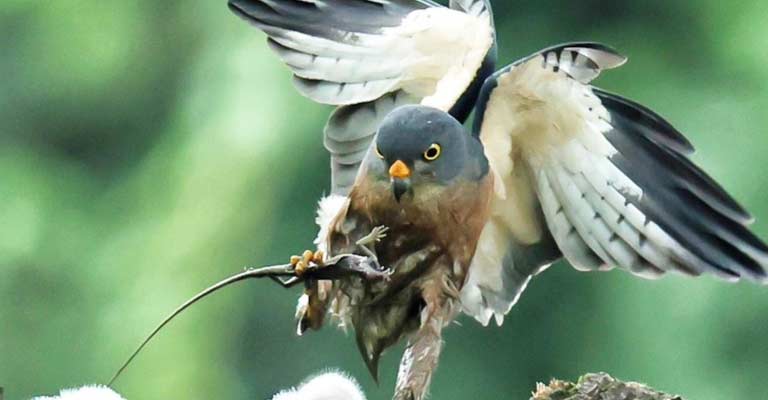
Chinese Sparrowhawks are carnivorous raptors with a diet primarily consisting of small birds. Their agile flight and sharp talons make them adept hunters, often preying on passerines, thrushes, and other avian species.
During migration, they may supplement their diet with insects, showcasing their adaptability to changing food availability.
Habitat
These birds exhibit a versatile habitat range, occupying wooded areas, forests, and open landscapes. They are known to thrive in diverse environments, from lowland plains to mountainous regions.
The availability of suitable perching sites and an abundance of prey species influence their choice of habitat.
Range Map
The Chinese Sparrowhawk’s range spans a significant portion of Asia, encompassing countries like India, and China, and extending to Southeast Asia.
A detailed range map illustrates the specific regions where these birds are commonly found, aiding researchers and conservationists in monitoring and managing their populations effectively.
Nesting
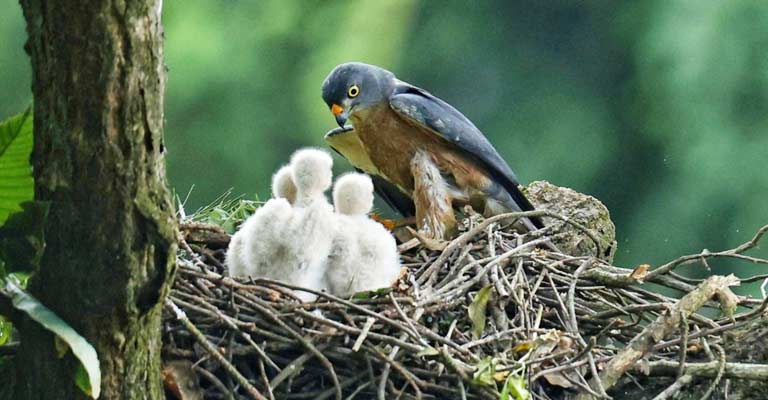
Nesting habits of the Chinese Sparrowhawk involve selecting concealed locations within the canopy of trees.
The female typically constructs the nest using twigs, leaves, and other vegetation, creating a sturdy platform for the eggs. Nest placement is strategic, often near the trunk for added protection.
Here’s a table outlining the nesting details of the Chinese Sparrowhawk (Accipiter soloensis):
| Nesting Details | Chinese Sparrowhawk |
| Clutch Size | 3-4 eggs |
| Number of Broods | Typically 1 per season |
| Egg Length | Approximately 39 mm |
| Egg Width | Approximately 30 mm |
| Incubation Period | About 28-32 days |
| Nestling Period | Approximately 25-30 days |
| Egg Description | Pale blue-green with light brown markings |
| Nest Construction | Constructed by the female using twigs, leaves, and vegetation, often placed near the trunk for protection |
| Nest Location | Concealed within the canopy of trees, providing security and shelter |
| Parental Roles | Both males and females contribute to the incubation and care of the young |
| Fledgling Independence | Young become independent but continue to rely on parental guidance for hunting skills |
| Nesting Season | Generally occurs from April to June during the breeding season |
Understanding these nesting details provides crucial insights into the reproductive biology and behavior of the Chinese Sparrowhawk, contributing to the overall knowledge of this species and aiding in conservation efforts.
Breeding
Breeding season for Chinese Sparrowhawks typically occurs from April to June. Males engage in courtship displays, showcasing their agility and prowess in flight.
Females lay a clutch of 3-4 eggs, and both parents contribute to incubation. The young fledge after about a month, becomes independent but still relies on parental guidance for hunting skills.
Diseases
Like many birds, Chinese Sparrowhawks are susceptible to various diseases, including avian influenza and parasites. Monitoring for signs of illness, such as lethargy or abnormal behavior, is crucial.
Regular health assessments by wildlife professionals contribute to the overall understanding of disease prevalence and transmission.
Treatment
In instances of illness or injury, rehabilitation efforts become vital. Wildlife rehabilitation centers play a key role in treating injured or diseased Chinese Sparrowhawks.
Proper diagnosis, treatment, and rehabilitation protocols ensure their successful release back into the wild, contributing to the overall health of the population.
Conservation
Conservation efforts for the Chinese Sparrowhawk involve habitat preservation, awareness programs, and monitoring population trends.
Addressing threats such as habitat loss, pesticide use, and illegal hunting is imperative. Collaborative initiatives between governments, conservation organizations, and local communities contribute to safeguarding the future of this species.
The life history of the Chinese Sparrowhawk unfolds as a tapestry of ecological intricacies and behavioral adaptations.
From its dietary preferences to nesting strategies and conservation challenges, a holistic understanding of this bird’s life history informs comprehensive conservation strategies essential for ensuring the continued well-being of this captivating raptor.
10 Fun Facts About Chinese Sparrowhawk
The Chinese Sparrowhawk (Accipiter soloensis) is a captivating raptor with a wealth of intriguing characteristics.
From its distinctive appearance to its behavior in the wild, here are 10 fun facts that showcase the charm and uniqueness of the Chinese Sparrowhawk.
- Sexual Dimorphism: One striking feature of the Chinese Sparrowhawk is its sexual dimorphism. Males sport a bluish-gray upper body with an orange breast, while females exhibit a brownish-gray hue and a finely streaked underbelly. This visual distinction aids enthusiasts in identifying the gender of these birds.
- Migratory Marvels: Chinese Sparrowhawks are remarkable migrants, covering vast distances during their seasonal journeys. They traverse regions from India to China and extend their route into Southeast Asia, showcasing their adaptability and endurance.
- Stealthy Hunters: These raptors are expert hunters known for their stealthy approach. With quick and agile flight, they navigate through dense vegetation in pursuit of small birds, surprising their prey with sudden bursts of speed.
- Nesting Heights: Chinese Sparrowhawks strategically select nesting locations high within the canopy of trees. The elevated placement protects their nests, reducing the risk of predation and ensuring the safety of their offspring.
- Vocal Acrobatics: During the breeding season, Chinese Sparrowhawks engage in vocal acrobatics. Their calls include high-pitched whistles and sharp chattering sounds, creating an auditory spectacle in their woodland habitats.
- Tail Banding: The narrow, dark bands on their tail feathers are not just for show; they serve a functional purpose. These distinctive bands aid in identification, particularly during flight, setting them apart from other raptor species.
- Adaptability in Diet: While their primary diet consists of small birds, Chinese Sparrowhawks display adaptability in their food choices. During migration, they may supplement their diet with insects, showcasing their ability to adjust to changing food availability.
- Parental Cooperation: Both male and female Chinese Sparrowhawks actively participate in parenting duties. From incubating the eggs to caring for the fledglings, this cooperative effort highlights their commitment to ensuring the success of the next generation.
- Egg Aesthetics: The eggs of the Chinese Sparrowhawk are a sight to behold. Pale blue-green with light brown markings, contribute to the overall aesthetic appeal of the species’ reproductive biology.
- Conservation Concerns: Despite their adaptability, Chinese Sparrowhawks face conservation challenges, including habitat loss and illegal hunting. Understanding these challenges is crucial for implementing effective conservation strategies and ensuring the continued well-being of these remarkable birds.
The Chinese Sparrowhawk enchants enthusiasts with its unique characteristics and behaviors, making it a species worth celebrating and conserving.
Wrapping Up
The Chinese Sparrowhawk emerges as a charismatic and adaptable raptor, captivating enthusiasts with its unique traits.
From its striking sexual dimorphism and stealthy hunting techniques to the challenges it faces in a changing environment, the life of the Chinese Sparrowhawk is a testament to the marvels of avian diversity.
As we delve into its nesting habits, migration patterns, and cooperative parenting, a deeper appreciation for the intricate balance of nature unfolds.
The conservation concerns surrounding this species emphasize the urgent need for collective efforts to safeguard their habitats and ensure a harmonious coexistence with humanity.
The Chinese Sparrowhawk, with its aerial prowess and aesthetic allure, stands as a symbol of the delicate interplay between wildlife and the ecosystems they inhabit. Best of luck.